Tragedy at Crowborough
Posted: 5 July 2014 07:29
In July 1944, a ferocious battle was being fought in NW Europe. The outcome of this battle could have a bearing on the outcome of war and casualties were high. However, this wasn't on the front line in France - it was in England.
The recent media coverage of the 70th anniversary of D-Day fell into the usual trap of focusing on June 6th 1944, while placing far less emphasis on the build-up and subsequent bloody campaign in Normandy.
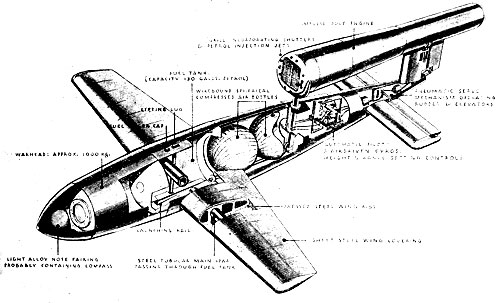
However, from June 13th, a new battlefront was opened with the first launches of the V1 flying bomb (right) - the first of Hitler's 'Vengeance' weapons. While the armies in Normandy fought their way inland, casualties from "Divers" back in England were rising.
What is often overlooked is that there were still large concentrations of troops in England awaiting their turn to cross the English Channel, but not all of them were destined to make it that far.
The 4th Canadian Armoured Division had been camped on the Ashdown Forest since November 1943. Here they had conducted rigorous training to prepare them to fight in the forthcoming second front in Europe. The war diaries reveal excitement at the news of June 6th 1944, and the expectation that they would soon be in action.
On June 28th, however, they received the disappointing news that their move to Normandy was to be delayed by at least two weeks and so they continued training in Sussex with flying bombs overhead.
Near misses
The war diaries give details of numerous V1 incidents and sightings; three near misses are described below.
Possingworth Park, 17 June
Canadian officers of the Algonquin Regiment in the lounge of the Possingworth Park Hotel near Uckfield were listening to the evening news bulletin in which the newsreader spoke of the "Buzzbombs" and boldly stated that "we have their measure now."
At that moment, Captain Mayer called out "There comes one now" and all rushed to the window to see. We were just in time to see the bomb diving down towards the hotel. Captain Mayer had the presence of mind to shout "Get down" and we all hit the floor - not a moment too soon, as the bomb exploded almost immediately....
All persons present who had been regarding "Buzzbombs" as a curiosity of some kind bound from somewhere in France to the Greater London area were rather forcibly reminded that they can land elsewhere and now have a rather healthy respect for them. The AA gunners who shot this particular bomb down are to be congratulated on their marksmanship; although not, by us, on their choice of killing ground.
Multiple injuries were sustained, with cuts from flying glass and falling ceiling plaster. The report also indicates that a civilian subsequently died although I have not yet been able to trace who this might have been.
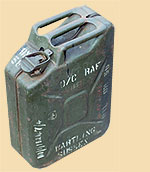
Broadwater Forest, 1st July
The forest was being used as a petrol supply depot from April 1944 for the purpose of filling jerrycans from bulk tankers.
One can imagine how nervous the occupants of this area felt with the possibility of a ton of high explosive falling on their already risky predicament - one of the companies here was filling 25,000 jerrycans a week!
A handful of fires had already broken out (and extinguished by both military and civilian firefighters) as a result of Canadian training exercises igniting scrub, when, on 1st July, a V1 came down just two fields away.
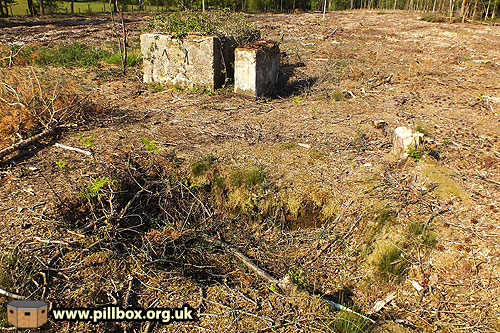
The war diary records the following day that "all ranks digging in and on completion, will sleep in trenches."
Some of these trenches still survive in the forest; the photo at right shows one such earthwork with a petrol tank base in the background.
During the build-up to Operation Overlord, thousands of slit trenches were dug; enough to accommodate every man in the marshalling and embarkation areas. Broadwater Forest, however, was not scheduled as either facility and regulations did not specifically order such earthworks.
Fortunately, it seems that petrol activities in Broadwater had ceased by the time another flying bomb landed in the centre of the forest in August. One of the units did not escape the Vengeance weapon menace though; having gone to Normandy in July, by October it found itself at Antwerp under fire from both V1s and V2 rockets; the war diary records the loss of some of its petrol stock as a result.
Back to Sussex and by July, some of the Canadians actually got to play a part in the anti-Diver defences: the Divisional HQ war diary for 3rd July states:
8 Canadian LAA Regiment has now joined the many English batteries in setting up to fight the "Flying Bombs". The CRA (Commander, Royal Artillery) has offered 1000 cigarettes to the first troop bringing one down. We will take a better view of this when we find out where they land.
Note the sardonic realisation that damaged flying bombs may drop on your head; a sentiment echoed from the report on the Possingworth incident quoted above. This possibility may or may not affect the main incident under investigation here.
Maresfield, 3rd July
A bomb (said to have been shot down by fighters) landed in the tank park of an Armoured Regiment based at Maresfield. Buildings were damaged and two men received light injuries. A water bowser and five 60cwt trucks were badly damaged.
The men now seem to be taking a little more notice of the...buzz-bomb since this happening and some are hovering around the slit trenches when one can be heard approaching.
The Crowborough incident, 5th July 1944

The incident at Crowborough involved "B" Company of the Lincoln and Welland Regiment.
Camping near Crowborough Common (photo at right), the company had marched out to Gill's Lap on Ashdown Forest at 08:00 until 17:00 to conduct company training, including an anti-tank exercise.
Arriving back at their campsite, "B" Company's day was to end in tragedy at 18:25:
An enemy P-Plane, or Flying Bomb, flying NW, crashed into a strip of woods immediately adjacent to "B" Coy HQ, resulting in the deaths of seven men and serious injury to seventeen.Casualties included CSM R.E. Wing who died on admittance to hospital. The Company HQ Stores and Field Kitchen were fatally destroyed, as well as personal kit of all the Coy Officers and various men.
Excellent work was done by all medical personnel within the unit under the supervision of the Medical Officer. Civilian doctors and Civil Defence personnel were on hand to assist in removing the wounded to hospital.
Major B. Fisher, OC "B" Company, although slightly wounded, assisted in identification of the dead men and aided the wounded, before being removed to hospital himself.
One can only imagine the scene of carnage. 15 Canadian Field Ambulance's diary describes the medical operation:
At approximately 18:40 hrs a message was received that a Robot Plane has exploded in the lines of the Lincoln and Welland Regt. Four Medical Officers left immediately with one heavy and three light ambulances and were at the scene of the accident in twenty minutes. The unit Medical Officer had dressed all the wounded and there was little to do except to evacuate the wounded. Seven were killed instantly and fifteen were wounded, two of whom have since died. The remainder were mainly minor injuries. The medical services were complimented by the OC of the Lincoln and Welland Regiment in their prompt and efficient services.
12 Canadian Field Dressing Station assisted, evacuating the wounded back to their lines for continuing treatment; the more serious cases were sent on to No.13 Canadian General Hospital at Cuckfield.
An ever-present, but often unsung, service also attended the disaster - the Army Chaplains. Four of the Division's Chaplains arrived at the scene and were involved in the evacuation of the wounded.
The casualties
The initial casualty list compiled by the Lincoln and Welland Regiment was as follows:
Killed
B136987 Pte Burton HN
A116825 Pte McLellan EW
B41014 Pte Turner W
A117994 Pte Voakes VJ
B40683 Pte Welbanks RS
B40679 Pte Taylor HGDied of Wounds
B40525 CSM Wing RE
Missing Believed Killed
B41096 Pte Ralph SC
Wounded
Major FB Fisher
A106392 Pte Bolduc MG
B132319 Pte Bowerman WA
B40560 L/Cpl Crocco R
B143547 Pte Evans HN
C80249 Pte Froats JA
B142719 Pte Henry FV
B41546 Pte Merton EL
A106274 Pte Prince EW (Seriously ill)
B137804 Pte Reid WR
B137999 Pte Saigeon PW (Seriously ill)
A107860 Pte Schluteter SH
B41320 Pte Wade CR (Seriously ill)
B138550 Pte Southcott LJ
B41320 Pte Smith ER
B41543 Cpl Wilson D
G22771 Cpl C**offin HG
Of the casualties in the above list, Private Saigeon died of his wounds on July 12 and Private Ralph, initially listed as missing, believed killed, appears to have subsequently been confirmed as having been killed in the incident.
One possible omission from the list is a Private Black, who died the following day; the records make no mention of him being involved in a separate incident, so it is assumed his name was inadvertently left off the list. Given the confusion in which Private Ralph could not be accounted for with certainty and the separation of the casualties between 12 FDS and the hospital at Cuckfield, it may be that Private Black was initially overlooked.
The Senior Chaplain's war diary for July 10th states that nine flying bomb casualties of the Lincoln and Welland were interred that day; this was two days before Private Saigeon died, making him the 10th victim. At the time of writing, there is one more file at the National Archives I need to consult that may resolve whether or not Private Black was involved in this incident; until I do so, the evidence I have points to his death being a result of this tragedy. I shall amend this text either way at a later date.
Why did the V1 crash here?
The Brigade HQ diary gives us the following detail:
The bomb appeared to dive into the ground with its motor still going until the moment it exploded. In addition it appeared to be put off by striking the branches of a tree and only a very small crater, only a few inches deep, was caused by the blast.
As the V1's 'natural' descent was caused by the engine running out of fuel, the fact that the jet was still pulsing until impact suggests that the bomb might have been affected by defensive action. Two war diaries in the division state that the bomb had been shot down by a fighter, but there is no conclusive evidence of this; war diaries often mention events not directly involving the unit concerned and the Adjutant responsible for compiling the diaries was rarely a first-hand witness to such events.
Also, while Anti-Aircraft Command records for that day mention a fighter shooting down a V1 near a searchlight site in Kent, injuring one man, there is no mention of a bomb damaged by the defences landing at Crowborough.
I see little point in trying to establish 'blame' though - tragedy happens in war. Of A, B, D and Support Companies of the regiment, only B and D were in their regular campsites; the other two were bivouacked overnight near the firing ranges they were to use the following day. Had B Company been one of those, lives might have been saved. On the other hand, a few more seconds of flight might have brought the bomb down on Crowborough itself, perhaps with a higher death toll. A few seconds less, and D Company's camp to the south might have been hit instead. There's too many "ifs" involved here and they're all academic.
The aftermath
A positive outcome of the incident was from lessons learned; the Algonquin Regiment's diary entry of the following day records that the men were digging down the floors of their tents 18 inches deep to protect against blast.
The Assistant Director of Medical Services (ADMS) also records on July 14th:
Capt. GW Lewin, Regimental Medical Officer Lincoln and Welland Regt and Major BD Robertson, OC 12 Cdn FDS spoke of their experience in attending and evacuating casualties when aerial bomb landed in Lincoln and Welland lines 5 July, with a view to bringing out the lessons to be learned from such an incident. The fact that speed is not the most essential factor, the necessity of good splinting of fractures, the question of resuscitation on the spot and the need for careful documentation were all brought out.
This experience no doubt helped the efficiency of the medical services once the Division got to Normandy.
What of the Lincoln and Welland Regiment? While the other companies conducted their timetabled training the following day, B Company's scheduled events were cancelled and company training with route march carried out instead. No doubt the officers were determined to keep the company focussed on their forthcoming task - the war would not stop on account of casualties. By July 8th, the field kitchen and stores destroyed had been made good.
The regiment's V1 experience was not over though; three days later D Company's area was hit by falling 20mm rounds being fired at flying bombs, but no casualties resulted.
On July 19th, the regiment moved to the East India Docks in London to embark for France. Part of the regiment were just moving from their marshalling area to the docks when "all ranks hit the dirt" as a V1 came down 100 yards away. Yet another bomb came down near the docks the following day.
Having been anchored off Southend, the convoy finally began its journey to France:
Convoy left Southend and the Thames Estuary. As they passed through the Strait of Dover there was an excellent view of long-range artillery firing across the Strait and of many flying bombs and the tremendous ack-ack barrage along the South Coast of England.
No doubt they were hoping this was the last they would see of the flying bomb.
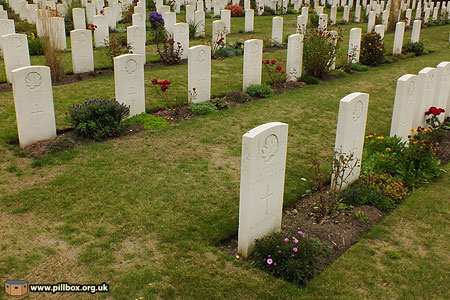
Burial
The majority of Canadian personnel who died in the UK during WW2 are buried in Brookwood Military Cemetery in Surrey.
The Chaplain's diary for July 7th mentions the arrangement of burial of the victims at Brookwood for July 10th; four chaplains of different denominations were present.
Major Fisher, who had been injured in the incident, the RSM and a firing party of one corporal and nine men also attended the burial which took place in plot 52 of the cemetery.
Private Saigeon succumbed to his injuries two days later in the hospital at Cuckfield and is buried in the same plot, where I came across his grave and those of his comrades last year, prompting my research into this incident.
The story told
The troops camped in England awaiting deployment to the continent did not initially appreciate the threat to them posed by the V1; they were at risk as were the citizens of London who were the intended target.
Piecing together the above has certainly made me, 70 years on, aware of the danger that flying bombs posed to military forces alongside the civilian population.
While there were much higher casualties suffered by service personnel and civilians in incidents such as those in Sloane Court and Wellington Barracks, these are well-known events and in London - the target area. It is tragic to think that flying bombs that failed to reach their intended target and failed to get through the defences unscathed could still produce a military effect.
Walk around any military cemetery and you quickly realise that each name carved in stone represents a story, and, as far as my research goes, the majority of these stories are as yet untold.
At least that majority has now been reduced by 10.
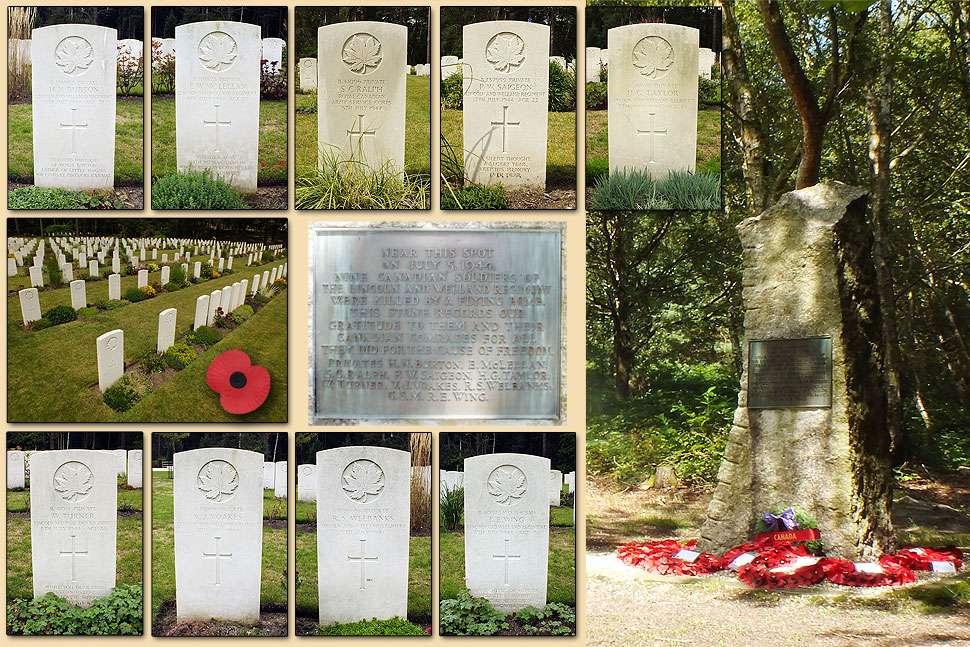
- Pete

Email:
Blog Latest

Bishopstone reveals its pillbox secrets
18 October 2021

Pillbox or Observation Post?
10 June 2020

Uncovering the hidden secrets of a pillbox
8 June 2019

Review of 2018
31 December 2018

Wartime Christmas in East Sussex (2)
24 December 2018
Jargon-buster
Operation Overlord
The codename for the Allied invasion of occupied Europe on 6th June 1944.
Slit trench
Small, narrow trench designed to provide protection against shrapnel and other battlefield hazards. Technically distinct from a weapon pit (which was intended soley as a defensive position) slit trenches were also used as defence works.
War diary
A record of events kept by all units from the point of mobilisation. A diary's contents vary enormously from unit to unit; some give detailed entries by the hour on a daily basis while others merely summarise events on a weekly/monthly basis.
This site is copyright © Peter Hibbs 2006 - 2024. All rights reserved.
Hibbs, Peter Tragedy at Crowborough (2024) Available at: http://pillbox.org.uk/blog/216738/ Accessed: 27 July 2024
The information on this website is intended solely to describe the ongoing research activity of The Defence of East Sussex Project; it is not comprehensive or properly presented. It is therefore NOT suitable as a basis for producing derivative works or surveys!